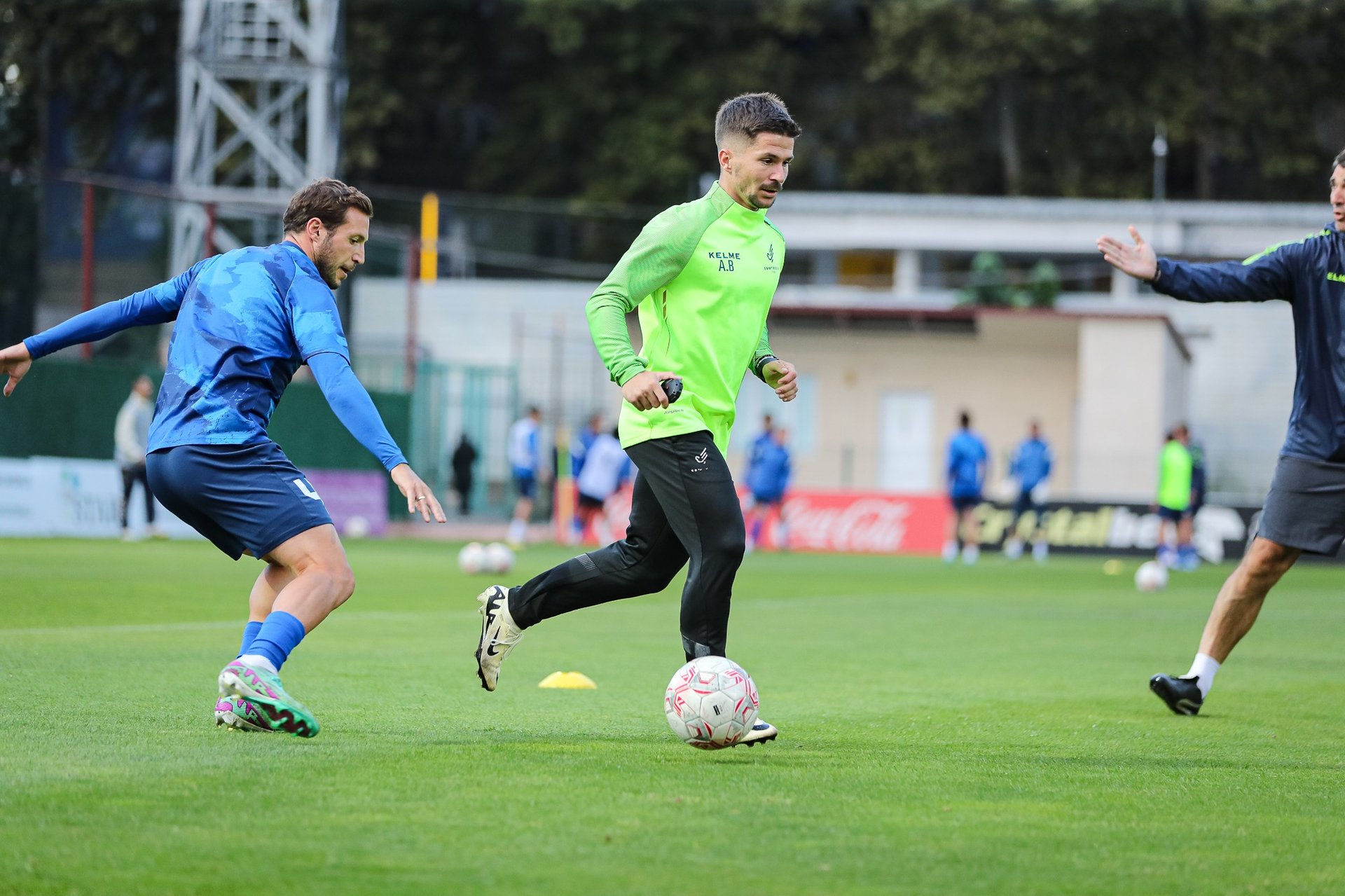Warm Up Periodization


Periodizing the warm up throughout the training microcycle (training week) and day can maximise player time and optimise subsequent training responses. Coaches can gain a big advantage by creatively utilising the 10-15 minutes of daily warm up time.
Active warm ups enhance muscle temperature, nerve conductivity, and metabolic reactions, with added benefits like increased blood flow and post-activation potentiation (PAP), which is when there is improvement in performance as a result of using a conditioning exercise (Zois et al., 2011).
It has been proposed that dynamic warm ups which replicate the upcoming activity movements enhance performance by increasing muscle excitability, which can be extremely valuable for coaches. This suggests that such exercises prepare muscles for directional changes, sprints, and jumping efforts (Guinoubi et al.,
2015). Understanding muscles and energy systems is crucial for all coaches working in team sports like football, as incorporating dynamic stretching, mobility exercises, and specific drills, with or without the ball, readies players physically and mentally for subsequent practices, enhancing performance and reducing the risk of injury (Owen et al., 2013).
RESISTANCE WARM UP
Applied on days involving high-intensity movements, this strategic warm up incorporates external forces during accelerations, decelerations, and changes of direction. The controlled resistance pushes muscles beyond their usual range, activating the neuromuscular system to prepare the body for the subsequent high-intensity training demands.
SPEED ENDURANCE WARM UP
Incorporating speed endurance warm ups is crucial, especially on training days with extended accelerations and significant high-speed running and sprinting. The expansive pitch dimensions require sustained near-maximal speed, demanding physiological and biomechanical readiness (Djaoui et al., 2017; Malone et al., 2018).
SPEED REACTION WARM UP
In this training methodology, the reaction speed warm up practices are strategically applied on days with reduced fatigue in training. It is crucial when emphasizing fast cognitive reactions and tactical scenarios, especially with increased recovery intervals.
PRE-MATCH WARM UP
Day before the match. The aim is similar to the previous section, with a focus on minimizing fatigue elements with a balanced warm up. Tailored for neural stimulation with short, sharp movements and high-reactive elements, it avoids cognitive fatigue.
By structuring warm up routines that seamlessly align with the physical and technical session objectives, coaches not only mitigate injury risks which may stem from insufficient preparation or lack of session progression, but also enable the potential to foster a dynamic training atmosphere conducive to player development and maximize this time of the session across the training week.
Additionally, by using a variety of different warm ups in the sessions throughout the weekly training cycle, coaches facilitate continuous growth and adaptation, laying the groundwork for sustained improvement over time. Ultimately, the integration of daily themed periodization principles into warm up routines serves to prime players and ready them for what will come next in the training flow, while reinforcing the holistic approach to player development endorsed by coaches at all levels of the game.

